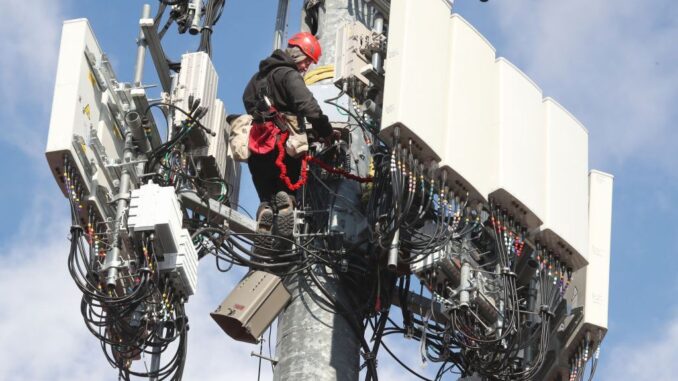
A world without 3G tech can upend society.
Trucks disappear from tracking devices, sensors stop signaling when fuel tanks are empty, and data from containers stops transmitting.
That is the future companies fear when 3G technology begins phasing out this January. AT&T, Verizon, and T-Mobile are among the first to announce they will sunset their 3G broadband cellular technology in 2022.
This will make all devices that use 3G technology unable to transmit messages through a network. “Certain medical devices, tablets, smartwatches, vehicle SOS services, home security systems and other connected products may be still using 3G network services,” according to the FCC.

The demise of 3G services comes as carriers focus their resources on 4G and 5G technology, the latest generations of broadband. Turning off 3G will free up bandwidth needed for 5G. But serious issues complicate the switch, such as supply-chain disruptions and the expense.
Until then, an AT&T spokesperson said “less than 2 percent of our mobile traffic is on 3G services.” Two percent, however, still accounts for at least 80 million 3G devices in the network today.
Carriers said companies have been given ample time to switch.
“Initially, we announced we would close down our 3G network in 2019. However, we extended our shut-off date — first to the end of 2020 and now to the end of 2022 — in order to care for our customers and give them every effort to minimize disruptions to their service as they move to newer and more advanced technologies,” said Mike Haberman, Verizon Network vice president of network engineering.
Despite the extended shut-off date, many industry experts think the move is too fast.

The Five Generations
“For U.S. customers, the jump from 3G to 4G to 5G has been pretty rapid. It happened in less than 10 years,” said Don Miller, Chief Sales and Marketing Officer at Globe Tracker, which provides solutions to remotely monitory supply chain assets.
Also, many businesses are not eager to relinquish 3G.
“Companies want their devices to be able to last,” said Miller. That’s due to the time, energy and costs that go into changing devices using 3G technology.
Updating to 4G or 5G sensors is also expensive. Globe Tracker, a company that makes tracking devices used by companies, charges $250-$300 for a sensor and an additional $35-$55 for the installation.
In addition to the cost of the sensors, many large tankers or containers will have to be taken out of the supply chain and transported to another location to have their sensor updated. Companies may have to scale back capacity to make the change to 4G or 5G, costing them even more.
These changes would come amid ongoing supply-chain disruptions. Shortages in hardware used in sensors and shipping have companies worried they will be unable to get the new technology installed before the 3G is silenced.

The switch takes time.
It “depends on the size of the organization. If you have a company with many assets, I can tell you that for the deployment of anything over 50,000 assets, it would take more than six months, and certainly six months to a year, especially in this climate,” said Miller.
Large companies often have hundreds of thousands, if not millions of important assets that are monitored. All have to be updated by the sunset date.
Carriers said the sunset of 3G technology will not happen all at once. Instead, it will begin before the official closing date in 2022. As it approaches, 3G towers will quickly become less reliable and eventually useless as services and updates stop.
“As we move closer to the shut-off date, customers still accessing the 3G network may experience a degradation or complete loss of service, and our service centers will only be able to offer extremely limited troubleshooting help on these older devices,” said Verizon’s Haberman.
Edited by Fern Siegel and Bryan Wilkes
The post Companies Scramble To Update To 4G And 5G, Fear Losing Critical Technology appeared first on Zenger News.
Recommended For You.



Be the first to comment